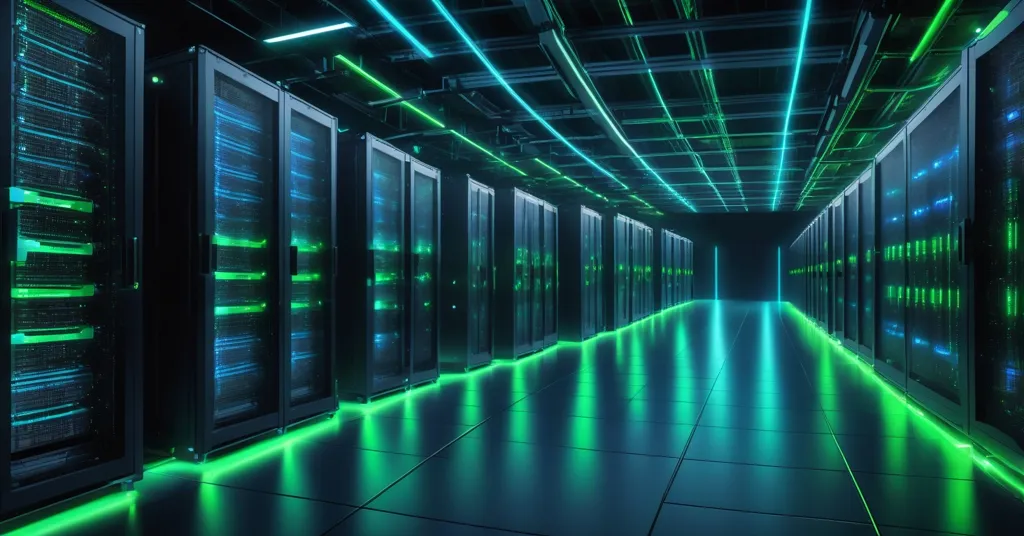Bitcoin Mining Hardware Revolution: Server Racks Outpace Shoebox ASICs

Bitcoin Mining Hardware Evolves: Server Racks May Replace Shoebox ASICs
The transformation in bitcoin mining hardware is underway, with traditional “shoebox” ASICs potentially being overtaken by advanced server rack units. This shift, led by major manufacturers like Bitmain, MicroBT, Bitdeer, and Auradine, promises to enhance efficiency and align mining operations with data center technology standards.
- Server rack units herald a new era in bitcoin mining
- Bitmain, MicroBT, Bitdeer, and Auradine lead the charge
- Auradine’s AH3880 and Bitmain’s U3S21EXPH set new benchmarks
- Hydro-cooling and direct-to-chip technology boost efficiency
- Potential integration with data centers, HPC, and AI applications
Bitcoin mining, the backbone of the network that powers Bitcoin, is evolving rapidly. The traditional “shoebox” ASICs, which have been the standard for years, are now facing competition from a new breed of hardware: server rack units. This transition is spearheaded by leading manufacturers such as Bitmain, MicroBT, Bitdeer, and Auradine, with the latter launching their Teraflux AH3880 model in March 2025. The AH3880 offers an impressive 600 TH/s across two server slots, utilizing hydro-cooling and direct-to-chip technology to enhance efficiency and streamline operations.
Hydro-cooling is akin to using water to cool down a hot engine, making the mining process more efficient by dissipating heat more effectively. Direct-to-chip cooling takes this a step further by applying cooling directly to the chip, reducing the complexity of the cooling system and increasing performance. Bitmain isn’t far behind with their U3S21EXPH, boasting an even higher hashrate of 860 TH/s over three slots.
These innovations are not just about mining bitcoins more efficiently; they’re about aligning bitcoin mining infrastructure with the broader data center ecosystem. As Sanjay Gupta, Auradine’s Chief Strategy Officer, notes:
The standardized server rack approach allows miners to streamline infrastructure, simplify maintenance, and even pivot toward high-performance computing (HPC) or AI applications.
This strategic move could provide miners with a hedge against the volatility of bitcoin mining profits, opening doors to new revenue streams. However, the transition isn’t without its challenges. Existing mining facilities face compatibility issues with the new units’ voltage requirements. Brad Cuddy from Cholla points out:
While the shift to server rack designs is exciting, the voltage compatibility issues are a significant hurdle for existing miners, suggesting that new sites might be more suitable for these new units.
Despite these challenges, companies like Hut 8 are embracing this new direction. They’ve partnered with Bitmain on the U3 model, noted for its compatibility with HPC architecture, and are building a new site in Vega, Texas, designed with these new designs in mind. Sue Ennis, Hut 8’s Head of Investor Relations, emphasizes:
The U form factor is crucial for our partnership with Bitmain, facilitating a smoother transition into other computing applications.
Auradine’s AH3880 has already secured contracts with several private and public miners, with speculation that Marathon Digital (MARA) might be among them, given their $50M investment in the company. If these pilot deployments prove successful, as industry analysts suggest, server rack ASICs could become the future of bitcoin mining—blending crypto infrastructure with mainstream datacenter innovation and potentially reshaping how industrial mining is done.
This evolution aligns with broader industry trends towards more standardized and efficient data center infrastructure. The adoption of direct liquid-to-chip cooling is expected to reach 40% in the data center industry by 2026, according to Cyrus One, a move that could further enhance the efficiency of bitcoin mining operations. However, we must keep our eyes open to the realities. Bitcoin maximalists might grumble about the increasing complexity and potential centralization this could bring. Yet, even the staunchest BTC advocate can’t deny that diversifying into other computing applications could be a smart move in a world where the price of bitcoin can be as unpredictable as a coin flip.
And while we’re all for disrupting the status quo and accelerating technological progress, we must remain vigilant against any scammers looking to exploit this shift. No bullshit here—just the honest truth about the challenges and potential of bitcoin mining’s next frontier.
Key Questions and Takeaways
- What is driving the shift from “shoebox” ASICs to server rack units in bitcoin mining?
The shift is driven by the need for greater efficiency, reduced operational complexity, and alignment with traditional data center infrastructure. - How do the new server rack ASICs improve upon traditional models?
They use hydro-cooling and direct-to-chip methods to boost efficiency and reduce complexity, and they align better with data center standards, allowing for potential use in high-performance computing and AI applications. - What challenges are associated with adopting these new designs?
Existing mining facilities face compatibility issues with the voltage requirements of the new units, making retrofitting costly. - Which companies are leading the development of server rack ASICs?
Bitmain, MicroBT, Bitdeer, and Auradine are leading the shift. - What potential future impacts could these new designs have on bitcoin mining?
If successful, they could blend crypto infrastructure with mainstream data center innovation, potentially reshaping how industrial mining is done and allowing for diversification into other computing applications.
The future of bitcoin mining is not just about mining bitcoins. It’s about embracing a broader vision of what decentralized technologies can achieve, while staying grounded in the realities and challenges of the present. Whether you’re a newcomer or a seasoned vet in the crypto space, this shift promises exciting times ahead—so buckle up and enjoy the ride!



